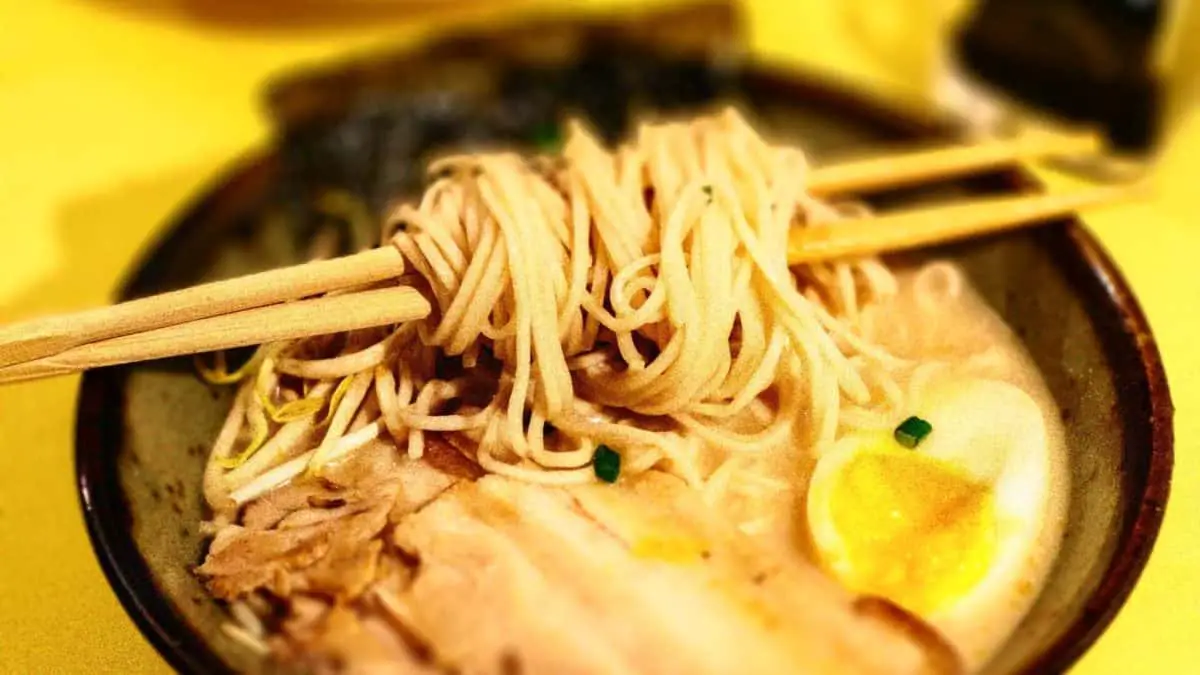Ramen Noodles Or “Chukamen” As They’re Actually Called
Ramen noodles are a type of noodle made from wheat flour, water, salt, and kansui (かん水), a type of alkaline carbonated water, derived from the Chinese jiǎnshuǐ (鹼水). They are usually served in a broth with various toppings. Ramen noodles are a popular food in Japan and many other countries.
Ramen noodles have been around for centuries and their popularity has only grown in recent years. If you’ve never had them before, you’re missing out on a delicious and easy-to-make meal.
So what are ramen noodles? Let’s take a closer look.

Ramen noodles are made from wheat flour, water and salt. The dough is then extruded through a die to create long, thin noodles.
Ramen noodles are typically cooked in a broth, but can also be stir-fried or served in a dry dish.
Ramen noodles are a popular food in Japan and many other countries. They are cheap and easy to make, which makes them a great option for budget-minded diners.
Ramen noodles are also very versatile and can be used in a variety of dishes.

Check out our new cookbook
Bitemybun's family recipes with complete meal planner and recipe guide.
Try it out for free with Kindle Unlimited:
Read for freeIn this post we'll cover:
Ramen noodles are called chukamen
People refer to ramen as one type of noodle, but actually, they can be a variety of wheat noodles used in a ramen soup. The soup is called ramen, the noodles are not.
Ramen noodles are called chukamen or Chinese noodles (“chuka” means China and “men” noodles) and can be of different types, chuka soba, the most popular, soba, udon, and some, depending on the ramen soup dish.
Ramen vs chuka soba vs shina soba
These three names for ramen are the same, and the reason there are several names for the same type of noodle is because of the period in which they were introduced in Japan.
Ramen was first introduced in the Meiji period and they were first called Nankin Soba, after the capital of China at that time, but that name has completely disappeared.
Then, sometime later, they were popularized under the name Shina Soba, but after World War II, the word Shina was related to the Japanese occupancy and the word Chuka, which also means China, took its place.
Chuka soba are the yellow thin noodles that people most commonly mean when they say “ramen noodles,” and look most like the wavy dried noodles that come in the instant ramen packages.
Are ramen noodles egg noodles?
Ramen noodles are not egg noodles but wheat noodles. They stem from a different type of Chinese noodles than the egg noodles you know from chow mein and lo mein.
Types of ramen noodles
Chuka soba
These noodles are the yellow, thin noodles that look most like the wavy dried noodles in instant ramen packages. These noodles are made from wheat flour, water, salt and kansui.
These are the thinnest Japanese noodles and have a mild starchy taste.
Soba noodles
Soba noodles are made from buckwheat flour and usually have a grayish-brown color. They are also known as “gray noodles.” These noodles are used in the Hakata style of ramen, which is a tonkotsu (pork bone) soup.
They are thinner than chuka soba noodles and have a nutty flavor.
Udon noodles
Udon noodles are made from wheat flour and have a thick, chewy texture. They are usually white or pale yellow in color.
These noodles are used in soups that have a light broth, such as kake udon, which is a soup made with a dashi broth.
They are the thickest of all ramen noodles.
Somen noodles
Somen noodles are very thin wheat noodles that are white or pale yellow in color. They are usually served cold with a dipping sauce.
Ramen vs somen noodles
Ramen noodles and somen noodles are both made from wheat flour, but ramen noodles are saltier and have a stronger flavor while somen noodles almost have a sweet taste. Somen noodles are thinner than ramen noodles and are usually served cold.
Check out our new cookbook
Bitemybun's family recipes with complete meal planner and recipe guide.
Try it out for free with Kindle Unlimited:
Read for freeJoost Nusselder, the founder of Bite My Bun is a content marketer, dad and loves trying out new food with Japanese food at the heart of his passion, and together with his team he's been creating in-depth blog articles since 2016 to help loyal readers with recipes and cooking tips.

